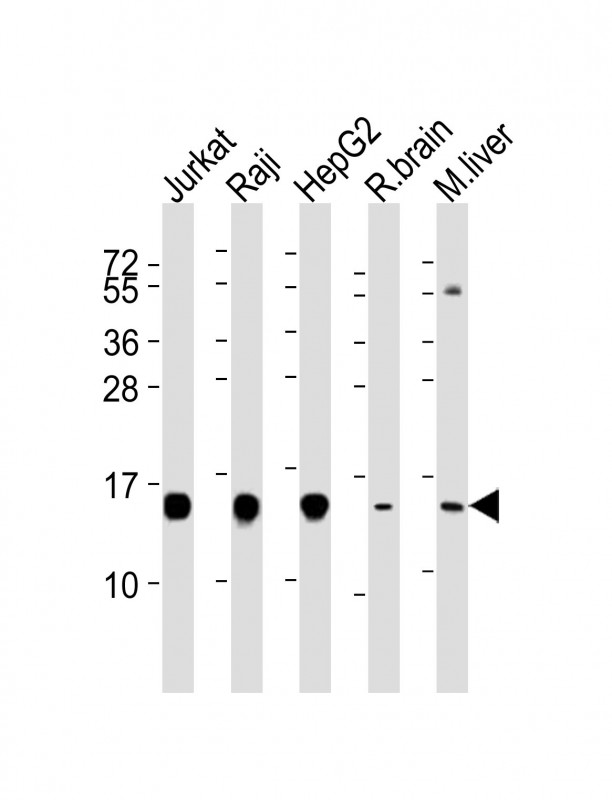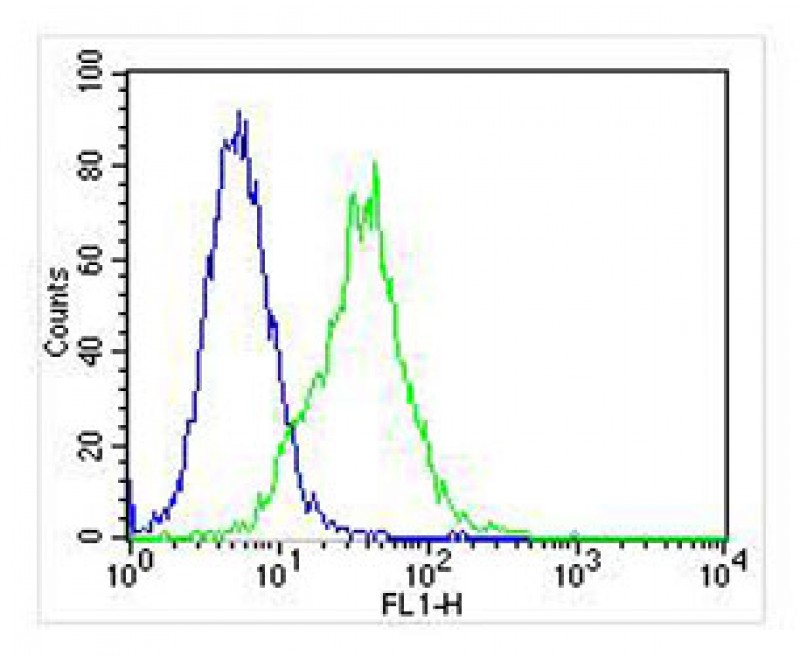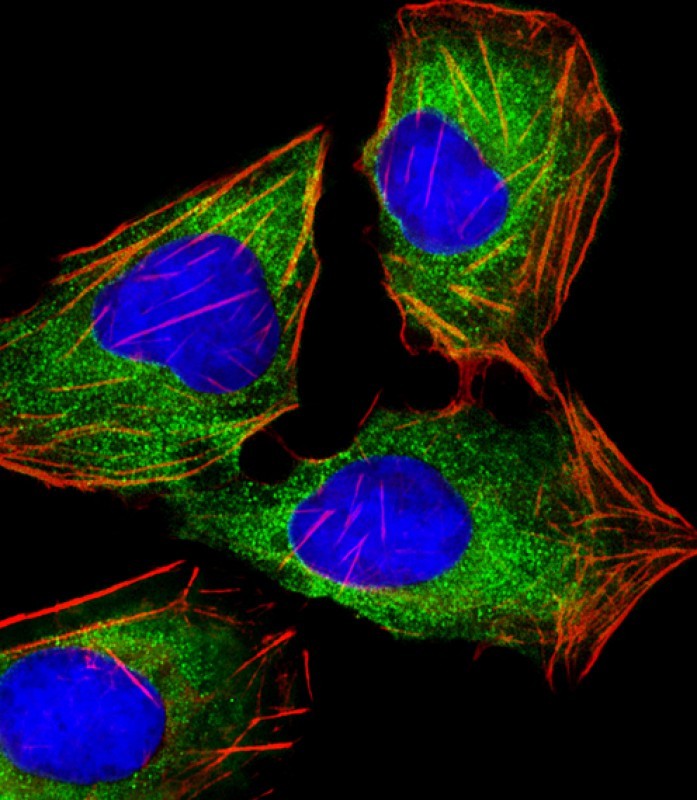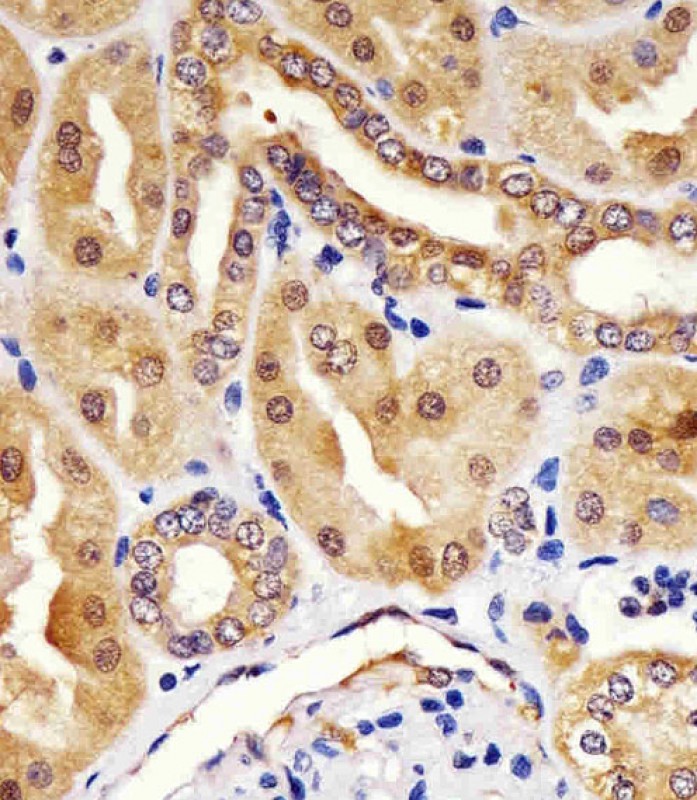



| WB | 1/4000 | Human,Mouse,Rat |
| IF | 咨询技术 | Human,Mouse,Rat |
| IHC | 1/100-1/500 | Human,Mouse,Rat |
| ICC | 1/25 | Human,Mouse,Rat |
| FCM | 1/25 | Human,Mouse,Rat |
| Elisa | 咨询技术 | Human,Mouse,Rat |
| Aliases | Histidine triad nucleotide-binding protein 1, 3---, Adenosine 5'-monophosphoramidase, Protein kinase C inhibitor 1, Protein kinase C-interacting protein 1, PKCI-1, HINT1, HINT, PKCI1, PRKCNH1 |
| Entrez GeneID | 3094 |
| WB Predicted band size | 13.8kDa |
| Host/Isotype | Mouse IgG1 |
| Antibody Type | Primary antibody |
| Storage | Store at 4°C short term. Aliquot and store at -20°C long term. Avoid freeze/thaw cycles. |
| Species Reactivity | Human, Mouse, Rat |
| Immunogen | This HINT1 antibody is generated from a mouse immunized with a recombinant protein of human HINT1. |
+ +
以下是关于HINT1抗体的3篇参考文献的简要信息:
---
1. **文献名称**:*HINT1 protein expression is reduced in neuropsychiatric disorders and correlates with synaptic dysfunction*
**作者**:Smith A, et al.
**摘要**:研究通过HINT1抗体检测发现,HINT1蛋白在精神分裂症和抑郁症患者脑组织中的表达显著降低,且与突触功能异常相关,提示其在神经精神疾病中的潜在作用。
---
2. **文献名称**:*HINT1 antibody-based analysis reveals tumor suppressor role in colorectal cancer*
**作者**:Zhang L, et al.
**摘要**:利用HINT1抗体的免疫组化和Western blot实验显示,HINT1在结直肠癌组织中表达下调,其缺失促进肿瘤细胞增殖和迁移,表明其作为肿瘤抑制因子的功能。
---
3. **文献名称**:*Interaction of HINT1 with opioid receptors: Insights from co-immunoprecipitation studies*
**作者**:Wang Y, et al.
**摘要**:通过HINT1抗体进行免疫共沉淀实验,发现HINT1与μ-阿片受体直接相互作用,调节受体信号传导,为疼痛治疗机制提供了新视角。
---
以上文献均以HINT1抗体为工具,聚焦于该蛋白在疾病、分子互作或生理过程中的功能研究。
HINT1 (Histidine Triad Nucleotide-Binding Protein 1) is a ubiquitously expressed enzyme belonging to the histidine triad (HIT) superfamily, characterized by a conserved His-X-His-X-His-XX motif involved in nucleotide hydrolysis. Initially identified as a tumor suppressor, HINT1 regulates diverse cellular processes, including transcriptional regulation, apoptosis, and neuromodulation. It interacts with multiple partners, such as protein kinase C (PKC), MITF (microphthalmia-associated transcription factor), and the μ-opioid receptor, modulating signaling pathways and gene expression. HINT1’s role in cancer is context-dependent, with studies showing both tumor-suppressive and oncogenic activities depending on tissue type or interaction partners. For example, HINT1 loss correlates with poor prognosis in certain cancers, while overexpression inhibits tumor growth in others.
HINT1 antibodies are critical tools for studying its expression, localization, and molecular interactions. These antibodies are widely used in techniques like Western blotting, immunohistochemistry (IHC), and immunofluorescence (IF) to assess HINT1 levels in cancer tissues, neuronal cells, or drug response studies. Dysregulation of HINT1 is also implicated in neuropsychiatric disorders, including schizophrenia and depression, making its antibodies valuable in neuroscience research. Commercial HINT1 antibodies are typically validated for specificity against human, mouse, or rat isoforms, aiding translational studies. Recent research highlights its potential as a therapeutic target or biomarker, emphasizing the importance of reliable detection reagents. However, users must verify antibody performance due to variability in cross-reactivity or epitope recognition across experimental models.
×